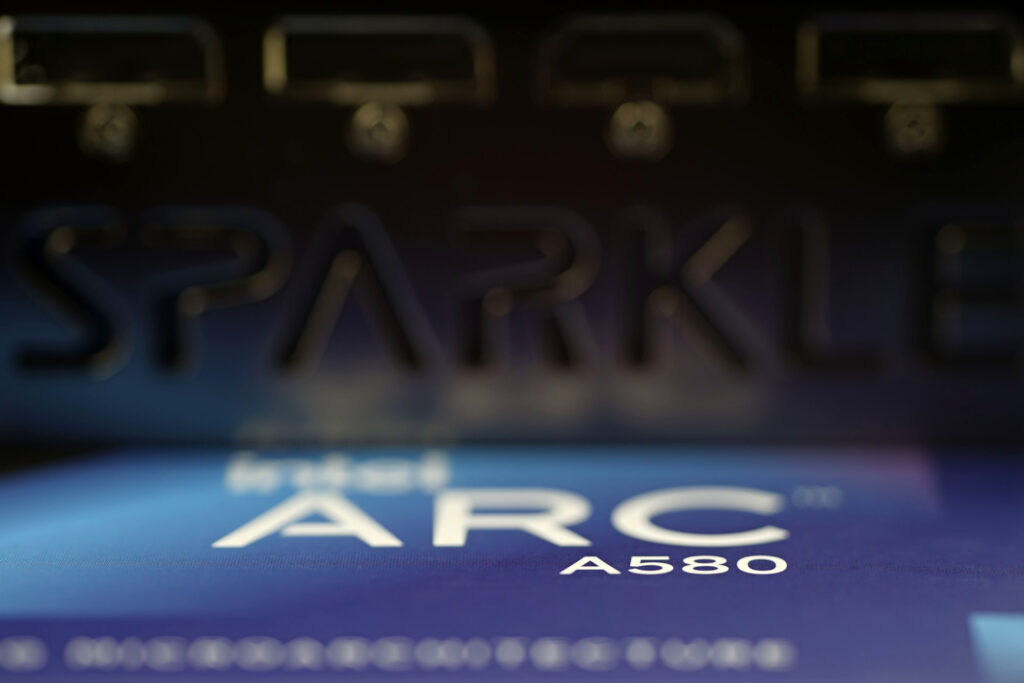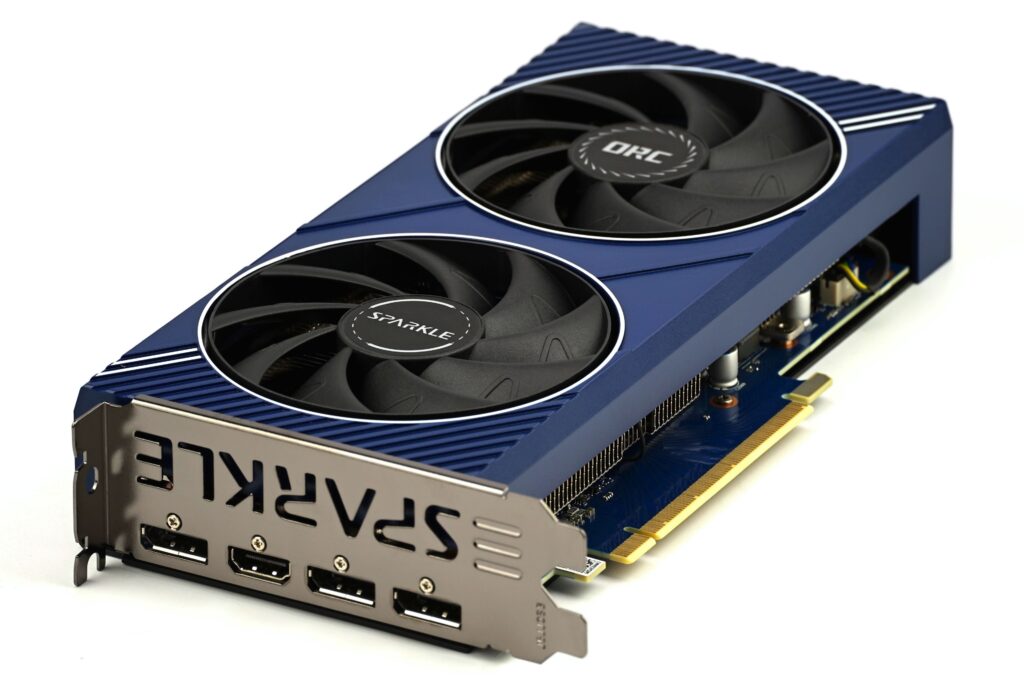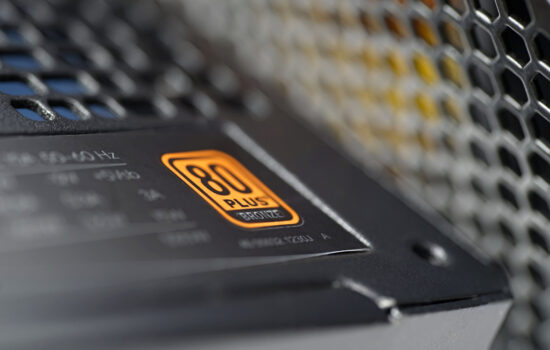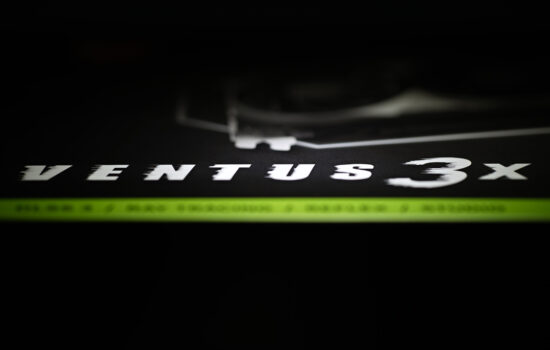Making the Arc A580 consume less power...
One of the negatives of Intel Arc graphics cards is their high idle power consumption. Competing solutions from a similar class are, in short, significantly less power hungry. To some extent, the consumption of Arc graphics cards can also be reduced in a very simple way. However, the latter also brings unwanted side effects that are not convenient in common practice and the whole thing is likely to be discarded because of them.
From the standard Sparkle Arc A580 Orc tests, you know that this graphics card’s idle power consumption is unappealingly high. Compared to the Radeon RX 6600 XT, it’s almost tenfold. And even the RTX 3050 Ventus 2X 8G OC is more than 4 times less power hungry. A detailed power consumption analysis shows that a particularly large electrical current goes through the PCI Express ×16 slot.
While with the RX 7600XT Pulse it’s only 0.1 A, approximately 2.8 A flows through the PCIe slot with the A580 in idle mode. For most cards, most of the power load falls on the external power supply. For example, the RTX 4080 Suprim X consumes at most 7W internally. This is good from the motherboard perspective as well. The smaller the current, the more sparing the graphics card is to its slot (PCIe ×16) and there will be lower temperature on the power supply part. But you don’t have to worry about the risk of fire even with the Arc A580 – even at 56.1 W/about 4.7 A (i.e. the most we have seen during load) there is still a margin and it is more about that inefficient operation. Intel is also aware of this situation and has published a tip on how idle power consumption can be lowered on its website.
For starters, you must have a motherboard with ASPM support (Active State Power Management). This is a feature that enables lower power states for PCIe. If you don’t find it in the PCI Express settings subsystem, then for newer platforms a (motherboard) BIOS update will probably suffice. For older ones, ASPM is unsupported. However, when it is supported, the L1 option needs to be enabled.
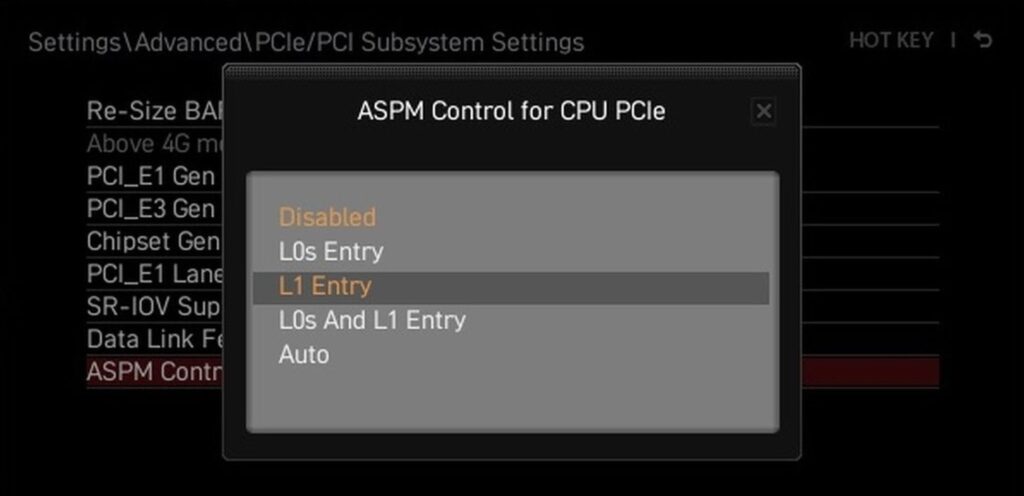
After setting the ASPM to L1, you have the first of two tasks behind you. It is then still required under the operating system in the advanced power options in the PCI Express section, to enforce “maximum power saving”. Mission accomplished. Now the Intel Arc graphics card may, or may not, run less power hungry. Scroll down for the interpretation of the results, we’ll explain everything in detail.
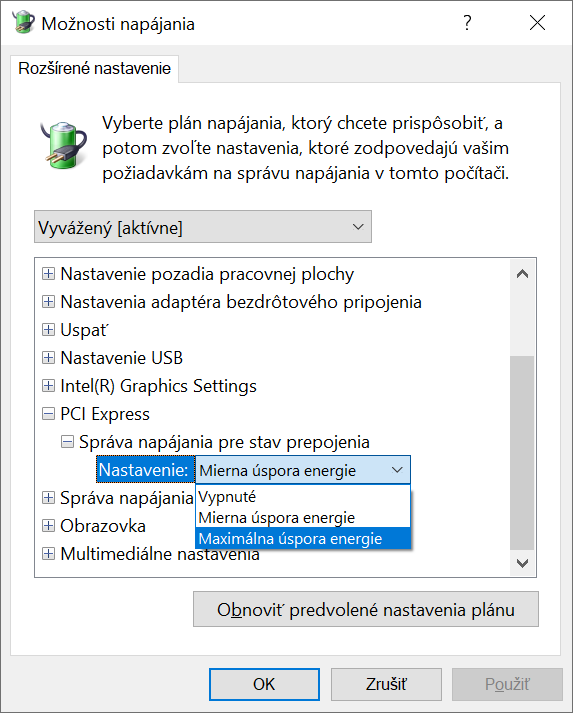
Minus ~6 W in idle, but…
The above steps do lead to lower overall idle consumption. Externally, there is always, in every situation, a small increase, but that’s alongside an eventual more significant drop in internal power from the PCIe slot. And when you add it all up, the Arc A580 Orc is more than 6W less power hungry in idle mode compared to the default state. Even with them, however, at around 38W it’s the most power-hungry graphics card in the tests.
Anyway, even a small improvement is better than none. That is, if there were no concurrent degradations during higher-load corresponding to video decoding, accelerated web browser, or even higher-bandwidth mode after a second monitor is connected or using a single high-speed one. These are all cases where you won’t see any improvement, even though the modified setting seems to be the least power hungry.
But why, under the same conditions, with the same settings, is there a reduction in consumption in one case and an increase in consumption in the other? The steps Intel recommends to reduce power consumption rely on putting to sleep the PCI Express lanes that connect the GPU and the CPU. This putting to sleep apparently allows the entire GPU to go into power saving mode as well. However, if the graphics card is displaying a desktop, the lane cannot sleep all the time, and even a small load is enough to make the sleeping of the PCIe lanes stop having a positive effect and the high power consumption returns. And even with a small extra from the external power supply, which is always there with these settings.
If you spend most of your time away from the web interface, it probably makes sense to interfere with power management on office computers. But in multimedia setups, the power meter will be worse off in the same amount of time. Negligibly, of course, it’s just a matter of avoiding bear’s service.
English translation and edit by Jozef Dudáš
Intel Arc seems to be downright counting on the use of hybrid graphics in a laptop, where low load modes would be taken over by the iGPU and the card itself would only be switched on for higher loads. This idle or low-load state that Arc is plagued with in the desktop will hold up better in laptops. Hybrid Graphics can theoretically be used in a desktop as well and could be a solution to the unfavorable idle power consumption, but again there are drawbacks for gamers (performance degradation, latency) and you can’t then pair the graphics card with a cheaper processor without an iGPU.
- Contents
- Making the Arc A580 consume less power...
- Net consumption of the graphics card
- Analysis of 12V rail internal power supply
- Analysis of 12V rail external power supply
- Analysis of 3.3V rail internal power supply






